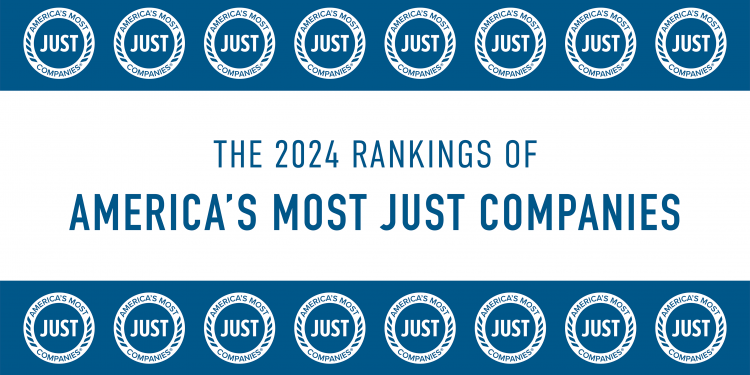Why Corporate America Needs Common Language for Climate Commitments
COP26, the UN’s annual climate conference, kicked off in Glasgow this week with new fervor as countries, dignitaries, and special interest groups challenge the way the globe tackles climate change and push for greater commitments to protect our planet. These commitments range from limiting deforestation to tackling methane leaks – and are urgently needed. Without reductions of emissions that limit global warming to 1.5 degrees Celsius, in-line with the goals of the Paris Agreement, the consequences are dire.
Companies are, and have been, responding to this urgency by setting or increasing their own climate targets. But as these announcements roll out, the language used to describe them varies. For some companies it’s a net zero target and for others it’s a carbon neutral goal. As climate action becomes a bigger priority for corporate leadership, the absence of consistency in how companies describe their commitments becomes a bigger problem.
Standardization is now a cornerstone of the conversation on corporate climate action. At COP26, the international accounting standards body announced it is working on global sustainability disclosure standards. And, after soliciting feedback from the public including input from JUST Capital, the U.S. Securities and Exchange Commission has signaled that climate reporting standards are on the way. The Science Based Targets initiative (SBTi) also recently launched its Corporate Net Zero Standard to verify companies’ net zero targets. While these efforts have largely focused on investors, it’ll be crucial for companies to be transparent with all stakeholders on what climate goals they’re setting, and how they’re planning to reach them, well before standards come into practice.
The American public is looking to companies to play a role in addressing climate change. In a survey conducted with our partners at the Harris Poll, three quarters of respondents said they believe that companies can have a high or moderate impact on climate change. Over half of respondents (58%) also said they had taken some action to support companies that have become more environmentally sustainable. However, as companies use terminology seemingly interchangeably, it’s more difficult for customers, employees, investors, policymakers, and other key stakeholders to know if they’re supporting the action they want to see.
This lack of standardization around meaning and metrics can lead to misrepresentation of action and less accountability for companies. Corporations have an outsized role in emitting carbon, and several major companies have led the private sector in mitigating climate risk. Microsoft for example, which came in as the top-scoring company overall in our 2021 Rankings of America’s Most JUST Companies, leads on carbon capture, climate finance, and waste mitigation. Despite this, the pathways to emissions reduction look different for different companies. Understanding the meaning behind their commitments is key to understanding these pathways.
As companies continue to weigh in on the future of climate policy for the remainder of COP26, we took a look at how Russell 1000 companies are describing their current climate targets, and how standards could change both the language they choose and the actions they take.
Assessing corporate America’s climate commitment word choice
Corporations use widely differing language to describe their sustainability efforts at large. For example, in our most recent round of data collection for our annual Rankings, we found companies using terms like “renewable energy” and “clean energy” to describe energy sourcing. Renewable energy refers to energy sourced from sources that are naturally replenished like wind, solar, hydro, and biomass power. Clean energy, however, refers to all zero-carbon energy, which is a broader category that includes renewable energy plus sources like nuclear energy. Similarly, we found that companies cited “diversion rates” and “recycling rates” when reporting on waste reduction. Both of these are conceptually different – the former means any waste that gets diverted away from a landfill through incineration, compost, or recycling, and the latter focuses just on waste recycled.
These differences were also visible when we began collecting data on corporate climate commitments this year. The four categories of commitments we looked at, listed in increasing effectiveness of reducing the effects of climate change, were:
- Emissions reduction
- Net zero by 2050
- Science-based target for a 2°C scenario
- Science-based target for a 1.5°C scenario
Throughout our data collection process, we noted the following terms used to refer to corporate climate commitments: “carbon neutral,” “net zero,” “emissions within operations,” and “across the value chain.” These descriptors may seem self-explanatory, but hidden assumptions beneath them cast a vastly different shadow on the level of action promised. “Carbon neutral” and “net zero” are commitments as their names suggest – ensuring that a company emits as much as it sequesters or its emissions net out to zero. The difference in these commitments, though, is that many carbon neutral commitments only address Scope 1 and 2 emissions, the direct and indirect emissions from the generation of electricity otherwise referred to as “emissions within operations.”
Conversely, net zero commitments tend to point to emissions “across the value chain,” meaning they cover activities – including transport, employee commutes, business travel, supply chain transport, and use of products – across 15 different categories. Companies with net zero commitments are looking to reduce and then neutralize their emissions across Scopes 1, 2, and 3. Scope 3 emissions usually make up most of a company’s emissions profile, making it even more important to understand when a climate commitment does not encompass them.
That’s why we specifically sought out net zero commitments as opposed to carbon neutral ones, and ensured the net zero commitments we credited specifically addressed Scope 3 emissions. Our analysis not only found a low level of net zero targets across the Russell 1000 – only 10.6% of companies have set this goal– but further highlighted how varying language can be confusing and misrepresent a company’s ambitions. Without an understanding of the nuances of net zero commitments, customers, shareholders, and others that are paying closer attention to corporate sustainability activity can easily be misled.
Moving toward science-based net zero standards
In addition JUST Capital’s efforts to find the highest quality data on corporate action on emission reduction, the Science Based Target Initiative (SBTi) released a Corporate Net Zero Standard last month. This is the “first global science-based standard to guide companies in setting net zero targets,” a tool that the evolving net zero conversation desperately needs. Under this Standard, companies must set a net zero target with both near-term (5-10 years) and long-term (2050) decarbonization pathways.
Cynthia Cummis, Director of Private Sector Climate Mitigation at the World Resources Institute and SBTi Technical Director and Co-Founder, touched upon the importance of interim targets as an aspect of broader goal-setting in a conversation JUST Capital hosted during Climate Week. “The other thing we need is companies to start being transparent about their plans to meet these targets. That isn’t a common practice at all,” she said. “Starting to mandate disclosure on emissions and transition plans will help ensure that the corporate sector is on the path for these long-term targets.” Claire Kells, Senior Manager, Corporate Engagement at the UN Global Compact also noted recent research during the discussion showing that only 8% of companies that have set net zero targets have interim goals.
Another important aspect of SBTi’s Net Zero Standard is a focus on “less net, more zero.” The Standard requires companies to achieve deep decarbonization for about 90% of their emissions across Scopes 1, 2, and 3 before turning to neutralization techniques to offset the remainder of their emissions. This is a clear stance on the use of carbon offsets, which are mechanisms for offsetting carbon emissions through reforestation or direct air capture and geological storage.
As it stands, companies can claim to be net zero (or even carbon negative) solely through the purchase of carbon offsets without changing any of their business practices. We looked at carbon offset disclosure among the Russell 1000, and found that of the 102 companies with a net zero by 2050 target, 77 disclose the amount of offsets they are currently using to reach that goal. While the highest rate of disclosure sits with companies in the software industry, the lack of greater transparency and baseline standardization around reporting offset use is a detriment to accountability on corporate climate action.
Though it’s still new, SBTi’s Net Zero Standard is expected to bring more standardization to how companies set climate targets and report on progress. Tools like the Net Zero Standard offer all stakeholders access to the necessary information to assess a company’s commitment to addressing climate change – including shareholders. Kells also raised, during our Climate Week session, that investors are increasingly important messengers for companies on climate. In fact, she pointed to a survey from the UN Global Compact and Accenture that found 30% of CEOs see investors as their best leverage point for action on sustainability, up from 18% five years ago.
With greater understanding of what companies mean and, in turn, what they’re pledging to do on climate, investors, customers, employees, policymakers, and other stakeholders can help incentivize more ambitious targets from corporate America. COP26 presents, perhaps, one of the biggest and most consequential opportunities for global climate action. For companies, that should mean putting clear and consistent meaning behind their climate goals. And the more of these commitments we can have scientifically verified and clearly disclosed, the better the outcomes for not just investors and customers, but for the whole of our planet.






